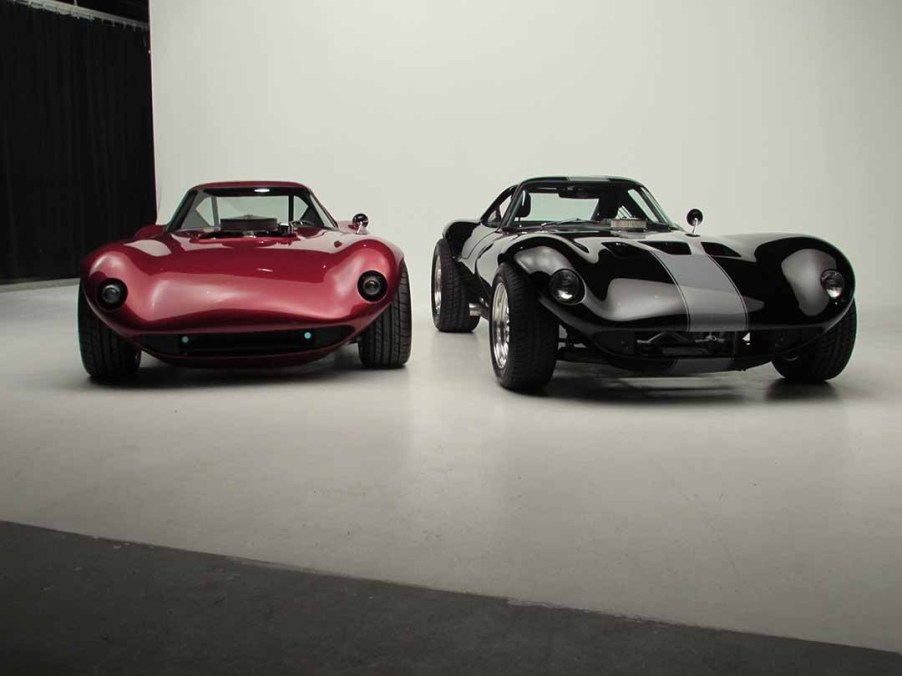
You Can Buy Your Very Own Car Company for $200k
Today, muscle cars have dwindled down to a handful of models. Cars like the Mustang, Camaro, Challenger, and Charger. But in the 60s and 70s, it was a different story. There were swarms of muscle cars prowling the streets. And before the first Mustang ever did a burnout, Carroll Shelby debuted the Shelby Cobra and Daytona, cars which would still be quick today. But these cars had a rival in the form of the Cheetah, aka Bill Thomas’ Cheetah. And now, the company that sells the Cheetah car is putting all the rights and tooling for it up for sale.
The Bill Thomas Cheetah
Back in the early 60s, Car and Driver reports, Bill Thomas was winning a lot of races for GM, in NASCAR, drag racing, and race circuits. He was planning on creating a Corvette racer, but then Shelby showed up with the Cobra. With GM suspending official racing funding, Thomas had to go back to the drawing board. He did manage to secure an under-the-table deal to get some Corvette V8 engines, but he still needed a car to put them in.

The resulting Cheetah car was designed by him and his employee Dan Edmunds. The first few prototypes had aluminum bodies, which later changed to fiberglass. The body panels were bolted to a chromoly steel tube-frame chassis. Underneath, the Cheetah had the Corvette’s independent front suspension, albeit with coils instead of leaf springs. The rear suspension was also from a Corvette, as were the drum brakes.

Under the hood was an enlarged version of the fuel-injected Corvette V8, linked to a Corvette 4-speed manual. Most Cheetahs used a 6.2-liter V8, but Barret-Jackson reports one had a racing-spec 7.0-liter V8.
Although the engine and tube-frame chassis weren’t unusual, their arrangement was. The V8 was pushed back so far, the Cheetah is technically a mid-engine car. The driver basically sits on top of the rear axle and differential. The Cheetah’s 90” wheelbase and engine position also means there’s actually no driveshaft: the engine and differential are connected with just a single U-joint.
Racing and driving it
Interestingly, Hagerty and Road & Track report Edmunds originally didn’t realize Thomas wanted to race the Cheetah. He thought it was just a proof-of-concept. If he knew it would go racing, Edmunds told Hagerty, he would have given it thicker tubing and reinforced the chassis.

Still, the Cheetah did make quite an impression. It only weighs about 2100 lbs with driver and fuel, and in original trim, puts out about 500 hp. Top speed was clocked at about 215 mph—back in 1964. The car’s dimensions went it was challenging to drive quickly, but even so, it managed to win 11 major races in 1964, with numerous wins in smaller events across the country.
Ironically, though, it never really raced head-to-head against a Shelby Cobra. Exact production numbers differ from source to source, but, including prototypes, no more than 15 Cheetah cars were ever made. That means that it was put in a different class than the production Cobra, up against specially-made racing cars. And often, when a Cobra did race a Cheetah, the Cobra had been extensively modified to race in said class.

The Cheetah also could’ve used some modifications, apart from even the stiffer chassis. Because of the engine’s size and position, the cabin got incredibly hot. Even with hood cutouts and a repositioned radiator, you can’t escape the heat when the headers are over your legs. Hemmings reports some owners had their Cheetahs turned into convertibles, just to alleviate the heat.
With today’s technology, though, that’s less of an issue.
The RER Cheetah Evolution
Speedville reports that there were some attempts at reviving the Cheetah muscle car. One company even builds continuation models (like Jaguar did) with Bill Thomas’ own blessing. But father-son team Chris and Craig Ruth wanted to update the car’s design, to turn it into what it should have been from day one. So, they created Ruth Engineering & Racing and started making the Cheetah Evolution.

The Cheetah Evolution keeps the original’s overall shape and dimensions. The engine is still a V8, a 6.2-liter pushing out 450 hp, linked to a 6-speed manual. But the chassis is new, with wider tubes, like Edmunds would’ve wanted; the suspension is also new. The doors are reinforced and have actual pillars. Instead of drum brakes, the RER Cheetah Evolution comes with 4-wheel disc brakes.
The Cheetah’s also been slightly civilized. It comes with a leather interior, windshield wipers, and has all the signals needed to take it on the road. And to make sure drivers won’t bake, you can even option A/C.
Or, rather, you could.
The car company is up for sale
As The Drive reports, the Ruths are ready to move on from the Cheetah Evolution. So, they’re selling the business off for $200,000.

That price is actually pretty reasonable, considering you genuinely would be buying an entire car company. That $200k includes existing materials, molds, supplier relationships, domain name rights, everything necessary to start producing your own Cheetahs. Some companies charge more just for a single car.
Follow more updates from MotorBiscuit on our Facebook page.


